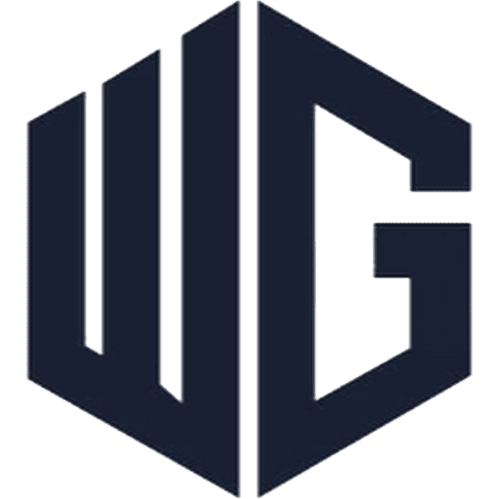Definition and importance of on-page SEO optimization
In the ever-evolving world of digital marketing, on-page SEO optimization has become an indispensable tool for businesses striving to improve their online visibility and attract more organic traffic. But what exactly does on-page SEO optimization entail, and why is it so crucial for businesses today?
Simply put, on-page SEO optimization refers to the set of techniques and strategies used to optimize individual web pages to rank higher in search engine results pages (SERPs) and drive targeted traffic to a website. Unlike off-page SEO, which focuses on external factors like backlinks and social signals, on-page SEO optimization revolves around enhancing the content and structure of a website to make it more search engine-friendly.
The importance of on-page SEO optimization cannot be overstated. With search engines like Google constantly refining their algorithms to deliver the most relevant and valuable content to users, businesses need to ensure that their web pages are optimized to meet these stringent criteria. By implementing on-page SEO optimization best practices, businesses can significantly improve their chances of ranking higher in search engine results, thus increasing their visibility, credibility, and ultimately, their bottom line.
However, on-page SEO optimization is not a one-size-fits-all approach. It involves a combination of various techniques and considerations, ranging from keyword research and selection to optimizing website content and ensuring a seamless user experience. In this comprehensive guide, we will delve into the nitty-gritty of on-page SEO optimization and provide you with the knowledge and tools you need to elevate your website to new heights.
So, if you’re ready to unlock the power of on-page SEO optimization and take your online presence to the next level, let’s dive right in! But before we do, let’s start by laying the foundation and understanding the basics of on-page SEO optimization.
On-Page SEO Optimization Basics
To achieve success in the online world, businesses need to have a strong presence on search engines. This is where on-page SEO optimization comes into play. By understanding and implementing the fundamental principles of on-page SEO, businesses can enhance their visibility and improve their rankings in search engine results.
Understanding search engine algorithms
Search engine algorithms are complex systems that determine the relevance and quality of a website’s content. Mastering these algorithms is essential for businesses to ensure that their websites are visible to potential customers. These algorithms consider various factors such as keyword usage, site speed, mobile-friendliness, and user experience. By staying up-to-date with the latest algorithm updates, businesses can adapt their strategies and stay ahead of the competition.
Keyword research and selection
Keywords are the cornerstone of on-page SEO optimization. Proper keyword research allows businesses to identify the terms and phrases that potential customers are using to search for products or services. By selecting the most relevant and high-volume keywords, businesses can optimize their website content to align with user intent. This ultimately leads to increased organic traffic and higher conversion rates.
Title tags and meta descriptions
Title tags and meta descriptions play a crucial role in attracting users to click on a website in search engine results. These elements provide a concise summary of the webpage’s content. Crafting compelling and keyword-rich title tags and meta descriptions can significantly improve click-through rates and boost organic traffic. It’s important to ensure that these elements accurately reflect the page’s content while enticing users to visit the site.
URL structure
An often overlooked aspect of on-page SEO optimization is the URL structure. A well-structured URL provides both users and search engines with valuable information about the page’s content. Businesses should aim for short, descriptive, and keyword-rich URLs that are easy to read and understand. Avoid using lengthy URLs with unnecessary parameters or complex characters, as they can negatively impact usability and search engine visibility.
Header tags and content hierarchy
Header tags (H1, H2, H3, etc.) and content hierarchy play a crucial role in organizing and structuring website content. Using header tags strategically not only helps search engines understand the importance of different sections of content but also improves the overall user experience. By highlighting the main headings and subheadings, businesses can guide users through the content and make it easier to scan and comprehend.
In the next section, we will delve deeper into the process of optimizing website content for on-page SEO. Stay tuned to learn about keyword placement, image optimization, internal linking, user-friendly URLs, and mobile optimization.
Recommended reading:
Optimizing Website Content
When it comes to on-page SEO optimization, one of the key aspects to focus on is optimizing website content. This involves strategically placing keywords, optimizing images and multimedia, incorporating internal linking, creating user-friendly URLs, and ensuring mobile optimization. By paying attention to these elements, businesses can greatly enhance their online presence and improve their search engine rankings.
Keyword Placement and Density
In the vast realm of SEO, keyword placement and density play a crucial role in determining the visibility of a website. Carefully selecting and incorporating relevant keywords throughout the content helps search engines understand the context and relevance of the page. It is essential to place keywords in key areas such as the page title, headings, meta descriptions, and within the body of the content. However, it’s important not to overdo it and maintain a natural flow of the text.
Optimizing Images and Multimedia
Visual elements, such as images and multimedia, not only enhance the user experience but also contribute to on-page SEO optimization. By optimizing images with descriptive file names and alt tags, businesses can provide search engines with additional context about the content. Compressing image files to reduce their size without compromising quality can also improve website loading speed, which is another important SEO factor.
Internal Linking
Internal linking is an effective way to signal the importance and relevance of specific web pages within a website. By linking related pages together, businesses can guide search engine crawlers to discover and understand the structure of their website. Internal links also help users navigate between different pages, improving user experience and keeping visitors engaged for longer periods. For example, you can link to our blog post on SEO competitor analysis to gain insights into how to stay ahead of the competition.
User-friendly URLs
Having user-friendly URLs not only makes it easier for visitors to remember and share specific web pages but also assists search engines in understanding the content of those pages. Including relevant keywords in URLs can provide additional context and improve the chances of ranking higher in search results. It is advisable to keep URLs concise, descriptive, and free from unnecessary characters or numbers. For instance, instead of using a generic URL like “www.example.com/page1?id=12345,” it is better to have a URL like “www.example.com/seo-best-practices”.
Mobile Optimization
With the increasing use of smartphones and tablets, mobile optimization has become an indispensable aspect of on-page SEO. Search engines prioritize mobile-friendly websites in their rankings, as they provide a better user experience for mobile users. Businesses should ensure that their websites are responsive and adapt well to different screen sizes. This includes optimizing text size, spacing, and touch elements, as well as minimizing loading times. By providing a seamless mobile experience, businesses can attract and retain a larger audience, leading to increased organic traffic and better search engine rankings.
Optimizing website content requires a combination of strategic thinking, technical knowledge, and a user-focused approach. By paying attention to keyword placement, optimizing images, incorporating internal linking, using user-friendly URLs, and ensuring mobile optimization, businesses can enhance their on-page SEO and improve their chances of ranking higher in search engine results pages. Stay tuned for more informative articles on SEO optimization tools and other best SEO practices to stay ahead in the ever-evolving world of SEO.
Technical SEO Considerations
When it comes to on-page SEO optimization, technical considerations play a crucial role in determining the success of your website. While excellent content and keyword research are essential, it is equally important to ensure that your website is technically optimized for search engine visibility. In this section, we will explore some key technical aspects that can significantly impact your website’s performance and rankings.
Site Speed and Performance
In today’s fast-paced digital world, users have little patience for slow-loading websites. Site speed not only affects user experience but also influences search engine rankings. Search engines prioritize websites that offer a seamless and speedy browsing experience. To enhance your site’s speed and performance, consider optimizing image sizes, minimizing HTTP requests, and leveraging browser caching. Additionally, compressing files and utilizing content delivery networks (CDNs) can help improve loading times.
XML Sitemap
An XML sitemap is a file that lists all the pages on your website, helping search engines understand its structure and prioritize crawling. By providing search engines with a clear map of your website’s content, you increase the chances of your pages being indexed and ranked appropriately. Including important information like the last modification date and the frequency of content updates can further enhance the effectiveness of your XML sitemap.
Robots.txt File
A robots.txt file serves as a set of instructions for search engine crawlers, telling them which pages or sections of your website should not be crawled or indexed. It is crucial to have a well-structured robots.txt file to prevent search engines from wasting time crawling irrelevant or duplicate content. However, it’s important to ensure that you don’t accidentally block search engines from accessing essential pages. Regularly reviewing and updating your robots.txt file is essential to maintain optimal search engine visibility.
Canonical Tags
Duplicate content can harm your website’s search engine rankings. Canonical tags help address this issue by specifying the preferred version of a page when multiple versions exist. By indicating the primary source of content, canonical tags guide search engines to the most relevant page, consolidating link equity and avoiding penalties for duplicate content. Implementing canonical tags correctly can play a vital role in optimizing your website’s visibility and ensuring that search engines understand your content hierarchy.
To summarize, technical SEO considerations are integral to the success of your on-page optimization efforts. By focusing on site speed and performance, implementing an XML sitemap, managing your robots.txt file, and utilizing canonical tags effectively, you can enhance your website’s visibility and improve search engine rankings.
Next, we will explore the impact of user experience on on-page SEO, delving into navigation, site structure, readability, and responsive design. Stay tuned!
Internal Links:
- Learn more about best SEO practices to boost your website’s performance.
- Discover the importance of SEO keyword research for effective optimization strategies.
User Experience and On-Page SEO
When it comes to on-page SEO optimization, it’s not just about incorporating the right keywords and meta tags. User experience plays a crucial role in determining the success of your website in search engine rankings. In this section, we will explore how navigation, site structure, readability, formatting, call-to-action elements, and responsive design contribute to an enhanced user experience and improved on-page SEO.
Navigation and Site Structure
A well-structured website with intuitive navigation is essential for both users and search engines. Navigation refers to the menu system that allows visitors to navigate through different sections of your website. It should be clear, concise, and easy to follow. Site structure involves organizing your content in a logical manner, creating a hierarchy that helps search engines understand the relationships between different pages and sections.
To optimize your website’s navigation and site structure, consider the following:
- Define clear categories and subcategories that reflect the main topics and themes of your website.
- Use descriptive labels for navigation links, avoiding generic terms.
- Include a search bar to help users find specific content quickly.
- Create a sitemap to provide search engines with a comprehensive overview of your website’s structure and content.
Readability and Formatting
The readability and formatting of your website’s content not only affect user experience but also impact search engine rankings. Readability refers to how easy it is for visitors to read and understand your content. Formatting involves using headings, paragraphs, bullet points, and other elements to structure your text and make it more visually appealing.
To optimize readability and formatting:
- Use clear and concise sentences and paragraphs.
- Break up your content into sections with informative headings.
- Incorporate bullet points and numbered lists to make information easier to digest.
- Use bold and italic formatting to emphasize important keywords and phrases.
- Ensure that your font size and style are legible on both desktop and mobile devices.
Call-to-Action Elements
Call-to-action (CTA) elements are crucial for guiding users towards desired actions on your website. Whether it’s signing up for a newsletter, making a purchase, or contacting your business, well-designed CTAs can significantly improve user engagement and conversions. From an on-page SEO perspective, effective CTAs also help search engines understand the purpose and relevance of your content.
To optimize your website’s call-to-action elements:
- Place CTAs strategically throughout your website, ensuring they are visible and enticing.
- Use clear and action-oriented language to encourage users to take the desired action.
- Include relevant keywords in your CTAs to reinforce the topic or purpose of your content.
- Test different designs and placements to determine which CTAs generate the highest engagement.
Responsive Design
In today’s mobile-driven world, having a responsive website design is no longer optional—it’s a necessity. Responsive design ensures that your website adapts and displays correctly on various devices and screen sizes, providing a seamless user experience. From an on-page SEO standpoint, responsive design is crucial because search engines prioritize mobile-friendly websites in their rankings.
To optimize your website’s responsiveness:
- Use a responsive website theme or template that automatically adjusts to different screen sizes.
- Test your website’s performance and appearance on various devices and browsers.
- Optimize images and multimedia to ensure fast loading times on mobile devices.
- Implement a mobile-friendly navigation system that is easy to use on smaller screens.
By focusing on user experience and incorporating on-page SEO best practices, you can create a website that not only ranks high in search engine results but also provides a delightful browsing experience for your visitors.
Next, we will delve into the crucial aspects of Tracking and Measuring On-Page SEO Success, so stay tuned!
Internal Links:
- Learn more about the best SEO practices.
- Discover the importance of SEO keyword research for your website.
- Master the art of SEO content writing to boost your rankings.
- Unveil the secrets of effective SEO link building strategies.
- Get started with SEO for beginners and lay a strong foundation for your website.
- Explore the power of SEO competitor analysis to stay ahead in the digital landscape.
- Find out how SEO for small businesses can level the playing field.
- Discover the essential SEO optimization tools that can supercharge your website’s performance.
- Understand the key SEO ranking factors that influence your website’s visibility.
Tracking and Measuring On-Page SEO Success
In the ever-evolving world of online business, staying ahead of the competition requires a comprehensive understanding of search engine optimization (SEO) techniques. As you lay the groundwork for your website’s success, it’s vital to track and measure the effectiveness of your on-page SEO efforts. By doing so, you can identify areas for improvement and fine-tune your strategies to achieve higher search engine rankings.
Setting up analytics
To gain valuable insights into your website’s performance, it’s crucial to set up analytics tools. The most widely used and trusted analytics platform is Google Analytics. By integrating this powerful tool into your website, you can track various metrics, such as traffic sources, user behavior, and conversion rates.
Once you have set up Google Analytics, you’ll be able to monitor key performance indicators like the number of visitors, session duration, bounce rate, and more. This data will provide you with a clear picture of how users are interacting with your website and which pages are attracting the most attention.
Monitoring keyword rankings
Keywords are the backbone of any successful SEO campaign. They are the terms and phrases that users type into search engines when looking for products, services, or information. By monitoring your keyword rankings, you can gauge how well your website is performing in search engine results pages (SERPs).
There are numerous tools available that can help you track and monitor your keyword rankings. Some popular options include SEMrush, Ahrefs, and Moz. These tools provide valuable insights into your keyword performance, including search volume, competition level, and ranking position. By keeping a close eye on your keyword rankings, you can make informed decisions about your SEO strategy and make necessary adjustments to improve your website’s visibility.
Tracking organic traffic
One of the most important metrics to measure and track is organic traffic. This refers to the number of visitors who land on your website through unpaid, organic search results. By analyzing your organic traffic, you can assess the effectiveness of your on-page SEO efforts in attracting relevant visitors to your site.
To track organic traffic, you can use the analytics tools mentioned earlier, such as Google Analytics. This will allow you to see the number of organic visits, the pages they land on, and the keywords that led them to your website. By identifying patterns and trends in your organic traffic, you can optimize your content and improve your website’s visibility in search engine results.
Remember, tracking and measuring your on-page SEO success is an ongoing process. It requires regular monitoring, analysis, and adjustment to ensure that your website continues to rank well and attract valuable organic traffic. By leveraging the power of analytics tools, monitoring keyword rankings, and tracking organic traffic, you can refine your on-page SEO strategies and achieve long-term success in the competitive online landscape.
If you want to learn more about SEO practices, check out our blog post on best SEO practices.
Conclusion
In conclusion, on-page SEO optimization is an essential aspect of any successful digital marketing strategy. By implementing the techniques and strategies outlined in this guide, businesses can improve their search engine rankings, increase organic traffic, and ultimately drive more conversions.
Throughout this article, we have explored the basics of on-page SEO optimization, from understanding search engine algorithms to conducting thorough keyword research and selection. We have delved into the importance of optimizing title tags and meta descriptions, as well as the significance of a well-structured URL and properly formatted header tags.
Furthermore, we have discussed the significance of optimizing website content, including keyword placement and density, optimizing images and multimedia, and internal linking. We have emphasized the importance of user-friendly URLs and the growing need for mobile optimization in today’s digital landscape.
Additionally, we have touched upon technical SEO considerations, such as site speed and performance, the importance of an XML sitemap, and the utilization of robots.txt files and canonical tags.
We have also highlighted the importance of user experience in relation to on-page SEO. By focusing on navigation and site structure, readability and formatting, and incorporating effective call-to-action elements, businesses can enhance the overall user experience and improve their search engine rankings.
Lastly, we have explored the significance of tracking and measuring on-page SEO success through the setup of analytics, monitoring keyword rankings, and tracking organic traffic.
It is important for businesses to continually evaluate their on-page SEO efforts and make adjustments as needed. By staying up-to-date with the latest SEO best practices and utilizing effective SEO optimization tools, businesses can stay ahead of the competition and maximize their online visibility.
Remember, on-page SEO optimization is just one piece of the larger SEO puzzle. To truly succeed in the digital landscape, businesses should also consider other aspects such as SEO link building, SEO competitor analysis, and SEO for small businesses.
By implementing a comprehensive SEO strategy that encompasses both on-page and off-page optimization techniques, businesses can achieve long-term success in the ever-evolving world of search engine rankings.
Thank you for reading this ultimate guide to on-page SEO optimization. We hope that you have gained valuable insights and actionable tips to enhance your digital presence and drive meaningful results. For more information on SEO best practices, be sure to check out our blog for further resources and expert advice.












0 Comments